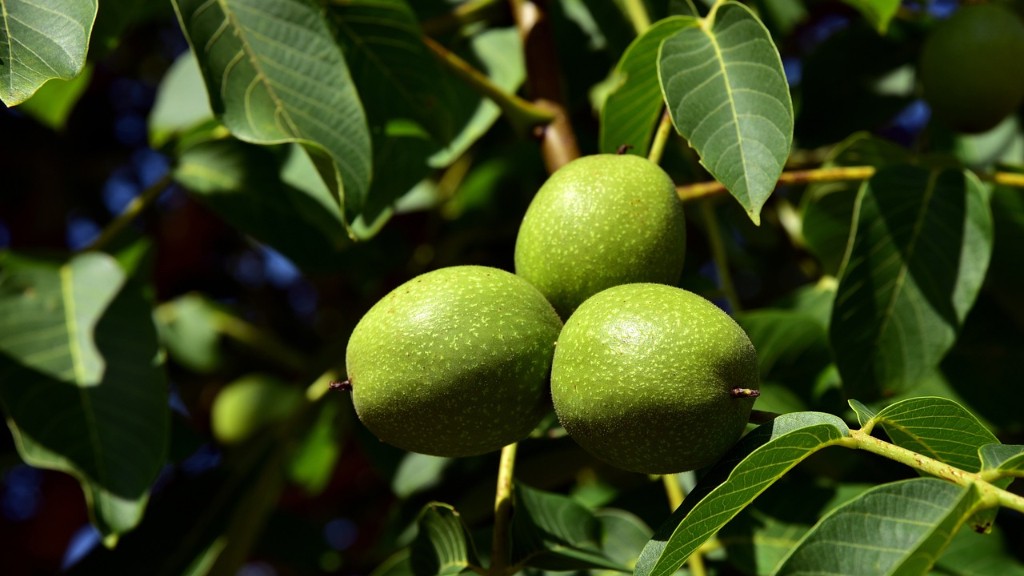Pot Size Basics
When it comes to pot size for an avocado tree, the best option is to go big. Avocado trees should be given a pot size of at least 20 inches in diameter and 18 inches deep. This size of pot will give the tree plenty of room for growth, as well as aeration for the roots and the ability to store and retain water for the tree.
Even if you have a larger tree, a 20 inch pot is still recommended to ensure that the tree’s needs are met. The larger pot will also provide some protection for the roots in case of strong winds or weather changes, meaning the tree is better able to withstand the elements.
When selecting a pot for an avocado tree, it is important to ensure that it is made from a breathable material such as terracotta or plastic. The material should also be non-porous to ensure that the tree’s roots are not compromised by water retention. Additionally, the pot should be heavy duty as the tree can get quite heavy.
To help promote root growth and avoid root rot, it is important to add a drainage tray or several to the bottom of the pot before planting your avocado tree. This will help ensure that the soil will be properly aerated and that the roots of your tree will be able to access the water they need whilst avoiding sitting in waterlogged soil.
Container Selection
The type of container you select for your avocado tree is hugely important, as a container that is too small will not promote healthy growth. If you find yourself needing to select a smaller pot for an avocado tree, try to opt for a plastic container that will still give the tree plenty of room to grow. Plastic containers are also more lightweight, making them easier to move if needed.
When choosing a pot for your avocado tree, one of the most important factors to consider is the type of soil you will be using. Avocado trees require well drained, organic soil to promote healthy growth and fruiting. If you are unable to source organic soil, you can add compost and fertilizers to any soil to boost its organic content.
Organic soil is often more expensive, but for an avocado tree, it is worth the extra cost. Poor soil can lead to root rot and other issues, so if you are able to source good quality soil for your avocado tree, it is definitely worth the additional expense.
Additionally, when selecting a pot for an avocado tree, ensure that it has plenty of drainage holes at the base. Without adequate drainage, the roots of the tree can be quickly waterlogged, leading to root rot and decreased growth. Position several bricks or stones at the base of the pot underneath the soil to help increase drainage.
Repotting
Repotting an avocado tree should only be done when absolutely necessary, as this is a very stressful process for the tree. Avocado trees do not like to be moved and if they are repotted too frequently, they can suffer weakened growth and decreased fruiting. In most cases, a tree should only be repotted every three to four years.
When repotting an avocado tree, it is important to use the same size of pot it was in previously, as this will cause the least amount of stress. If a larger pot is required, ensure that the tree is given time to adjust to the new pot before being moved to a larger size again. This will allow the tree’s roots to develop and expand, and lead to stronger growth in the long term.
Additionally, when repotting an avocado tree, be sure to use a light and airy soil mix. Heavy soil mixtures can lead to waterlogging of the roots, meaning that the tree will not be able to access all the nutrients it needs. Add a layer of coarse materials such as gravel to the bottom of the pot before adding the soil to help boost drainage.
Finally, it is important to remember that avocado trees are quite slow growers, meaning that they will not need frequent repotting. If the tree appears to be doing well, leave it in the pot it is in until absolutely necessary. Regular checks of the soil and roots can identify when it may be time to repot.
Facts & Tips
When it comes to potting an avocado tree, there are several important facts and tips to keep in mind. Firstly, ensure that the pot is of a suitable size – 20 inches in diameter and 18 inches deep is suitable for most trees. Additionally, ensure that the pot material is breathable and non-porous, and that the soil is well draining and contains plenty of organic matter.
Also, when repotting a tree, use the same size pot it was in previously – only move it to a larger one if necessary, and give it time to adjust before moving on to another larger pot. Lastly, avocado trees are slow growers, so don’t feel the need to repot too often if the tree appears to be doing well.
Fertilizing & Watering
Another important factor to consider when potting an avocado tree is fertilizing and watering. Avocado trees require regular fertilization and watering – but not too much – to ensure they get the nutrition they need. Organic matter such as compost or manure can be added to the soil to boost nutrients and promote healthy growth.
Watering an avocado tree should be done carefully, ensuring that the tree is not over- or under-watered. Check the soil regularly, but don’t water too frequently. Too much water can lead to root rot and other issues, but too little water can stunt the growth of the tree. A good guide for watering your avocado tree is to soak the soil every 2-4 weeks once the tree is established.
If you are unable to check the soil regularly, mulching can be added to the surface of the soil in the pot. This will help to retain moisture and ensure that the tree gets the water it needs, even when regular check ins are not possible.
Pruning & Grooming
Finally, when it comes to keeping your avocado tree healthy, it is important to remember to prune and groom it regularly. Pruning excess leaves and branches can help to promote better air circulation in the pot, as well as encouraging the tree to produce new, healthy growth. However, it is important to note that this should only be done when absolutely necessary, as pruning can be extremely stressful for the tree.
Grooming your tree is also important to ensure that it stays healthy and looks attractive. Regularly cleaning the container, as well as removing dead leaves and branches, can help keep your tree looking its best. This can be done with a gentle solution of mild detergent and water.
By following these steps when potting and caring for an avocado tree, you can ensure that it stays healthy and strong throughout its lifetime. With the right pot size and proper care, your avocado tree should be able to produce plenty of delicious fruit year after year.
Planting an Avocado Tree
If you have decided to plant an avocado tree in a pot, there are a few steps that should be taken to ensure it is set up for success. Firstly, ensure that the pot is of a suitable size and material for your tree, taking into account the size and needs of your avocado tree. Additionally, provide good quality, well draining soil, and ensure that it contains organic matter.
When it comes to planting the tree into the pot, it is important to leave a few inches at the top of the pot for ease of watering. Add a layer of coarse material such as gravel to the bottom of the pot to help with drainage, and then fill the pot with the appropriate soil type. Once planted, water the tree carefully – never let the tree sit in waterlogged soil.
Another important part of planting an avocado tree is staking it – this will help to stabilize and protect it when in the ground. Ensure that the stake is securely in place, and take care not to damage the tree’s roots when inserting it. This can be done by wrapping the stake with a material such as cloth before inserting it.
Finally, for best results, ensure that the pot is placed in an area with adequate sunlight – avocado trees love to bask in the sun! Also, ensure that the pot is placed somewhere sheltered from wind and rain, as this will help to minimize stress on the tree.
Harvesting & Enjoying Avocado Fruit
Your avocado tree should be able to produce delicious fruit in about three years from potting, depending on conditions and variety. When the fruit is ready to pick, depending on your variety, this should be done carefully using either your hands or tools such as snips. Be careful not to injure the tree during the harvesting process.
The fruit should be harvested when it has achieved its full size, and can be easily removed from the tree. In some cases, the fruit might not turn the traditional avocado colour until the very last minute of ripening – this is nothing to be concerned about.
Avocado fruit is incredibly versatile, and can be enjoyed in a variety of dishes. Be sure to try different recipes and pairings such as adding avocado slices to a salad, or guacamole to tacos. If a recipe calls for mashed avocado, ensure that the pit is removed before serving.
Fresh avocado fruit can also be frozen in slices and used in smoothies and other recipes for a quick and easy avo-fix. However, beware that this will affect the texture and flavour of the avocado, and will not have the same results as fresh avocado.
Caring for Your Avocado Tree
Caring for your avocado tree is an important part of the process, and should be done with respect and care. Ensure that the pot is kept in an area with adequate sunlight, and avoid exposing the tree to dramatic temperature changes or strong winds.
Water your avocado tree carefully, ensuring that it is not over- or under-watered. Also, take care not to overwater the soil – avocado trees are susceptible to root rot, and too much water can lead to serious issues. Additionally, be sure to feed your tree with organic matter every few months.
When it comes to pruning, exercise caution. Pruning should only be done when absolutely necessary, and with care and attention to avoid stressing the tree. As pruning will weaken the tree for a period of time, this should be avoided during periods of low fertility.
Finally, ensure that your tree is kept pest-free. Observe your tree regularly for signs of pests or disease, and treat accordingly using natural solutions or organic sprays. Again, exercise caution when applying sprays to ensure that your tree is not harmed in the process.




